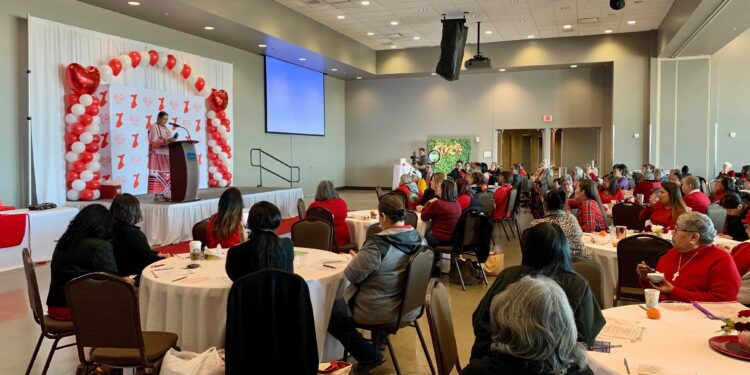By: Lani Hansen, Senior Reporter
TULSA, Oklahoma– Every year the month of February is recognized as Heart Awareness Month through the American Heart Association.
“The American Heart Association uses February to raise awareness of heart disease across the country,” Michael Phillips M.D. of Oklahoma Heart Institute said. “It’s specifically important in some populations such as Native Americans.”
According to Dr. Phillips, in the Native American population the penetration of heart disease is almost three-fold of non-Native American population. The penetration is 70-80 percent within the Native American population with diabetes, versus 20-30 percent in non-Native populations.
“It’s especially important for Native Americans to know this and to know the incident of silent heart disease is much higher,” Dr. Phillips added.
Heart disease can be treatable if it is caught early in someone. Dr. Phillips said early screening for diabetes and heart disease with echocardiogram and non-invasive testing at local clinics will help save lives, and reduce medical cost long-term.
Dr. Phillips breaks out the difference between men and women in the Native American population. In Native women, heart disease is extremely high prevalence and is frequently unrecognized.
“Cigarette smoking and obesity are important to the acceleration in heart disease, and not just its presence,” Dr. Phillips said. “In summary I would say the most likely causes would be diabetes, smoking, genetics, diet and obesity.”
There are two common types of heart disease in Native Americans that come with fatigue, shortness of breath and chest pain. These are the Coronary Artery Disease and the Valvular Heart Disease.
The Valvular Heart Disease causes more damage to the lungs and the rest of the body. Coronary Artery Disease causes damage to the heart muscle which eventually leads to heart failure, according to Dr. Phillips.
“One of the important things to prevent heart disease is activity,” Dr. Phillips stated for Native Americans. “The second thing is to diagnose and treat diabetes, tobacco sensation and screening.”
Since February is American Heart Month, people can raise awareness by recognizing the incidents of heart disease in their own family. Also, people may show awareness by wearing red.
Because of the pandemic the American Heart Institute will not be doing any events. Dr. Phillips wanted to recognize the tribal governments on the rollouts of the COVID vaccinations.
He added, “COVID brings about blood clots and pulmonary embolism. Part of heart awareness month, I’d like to raise awareness to pulmonary blood clots as well which can lead to chronic lung disease.”
For more information on heart disease visit the American Heart Association at, www.heart.org.





